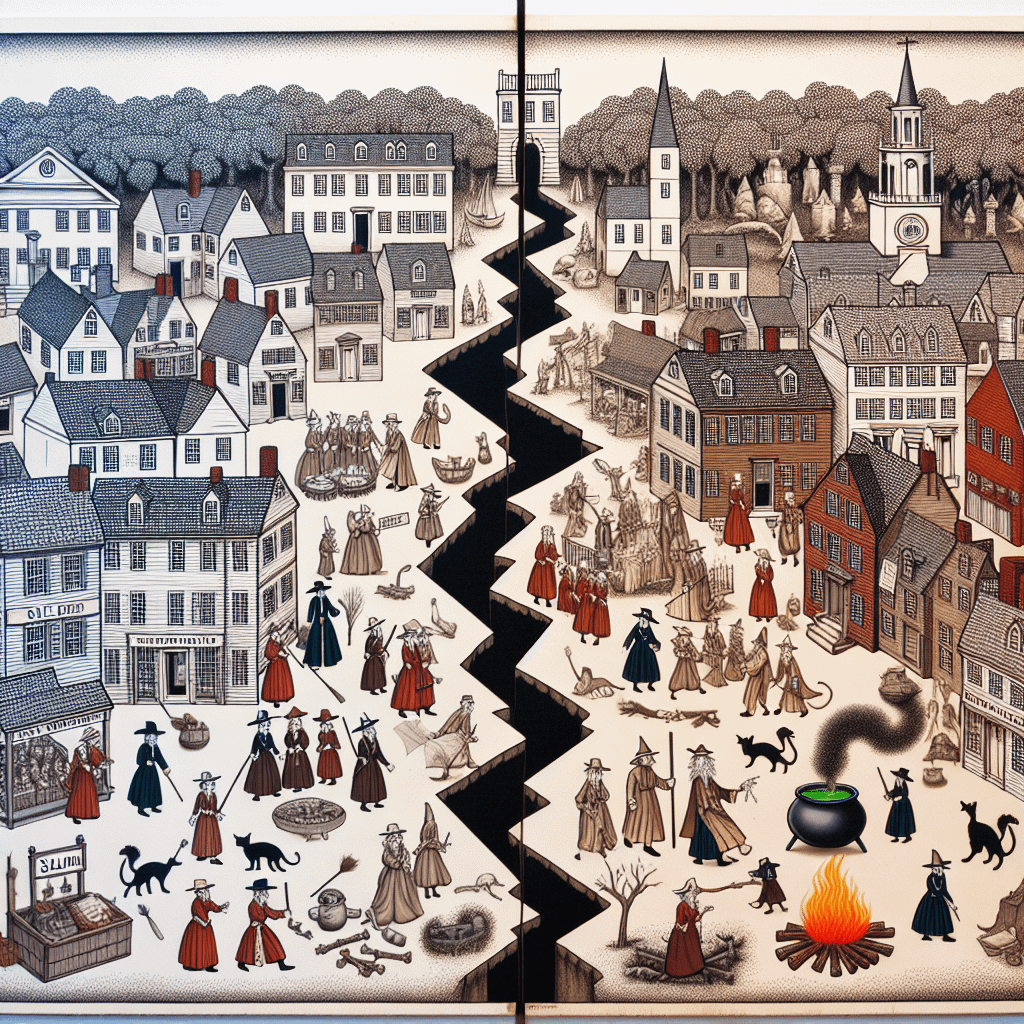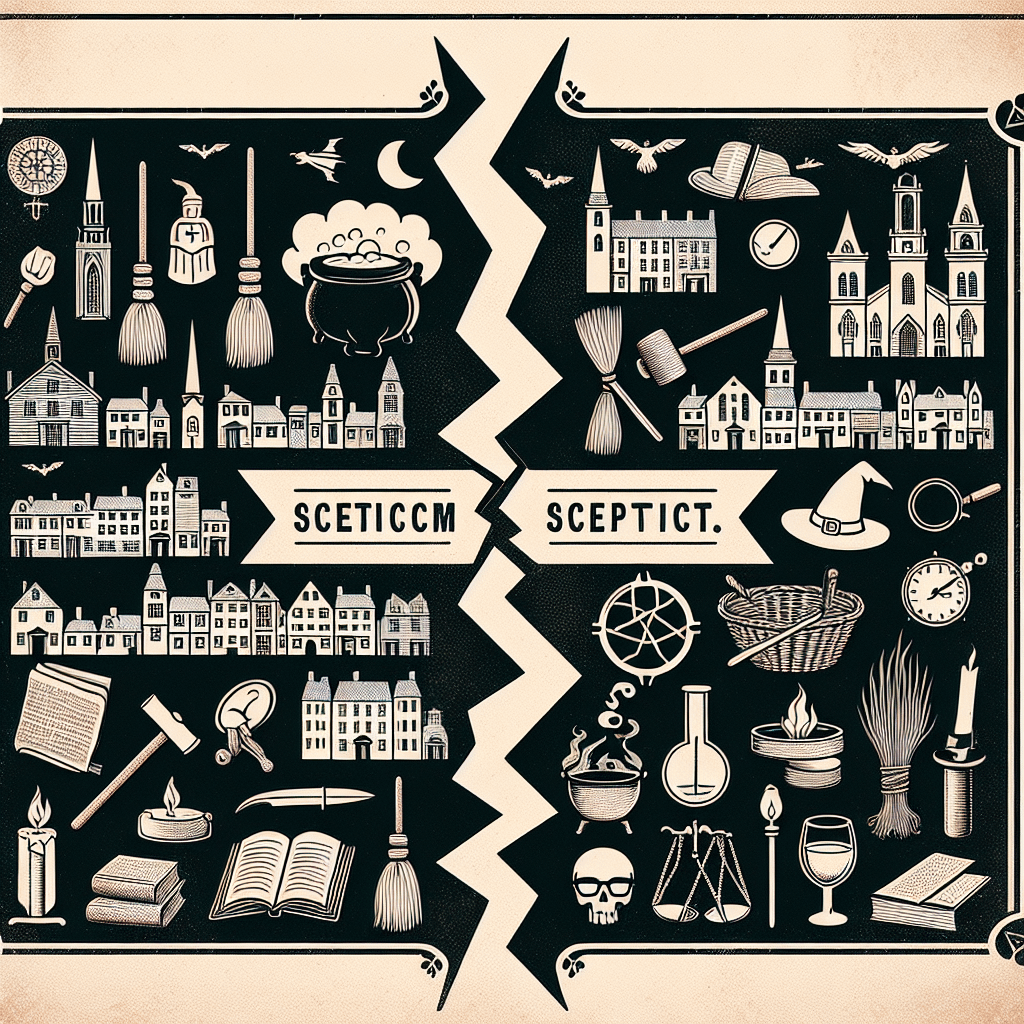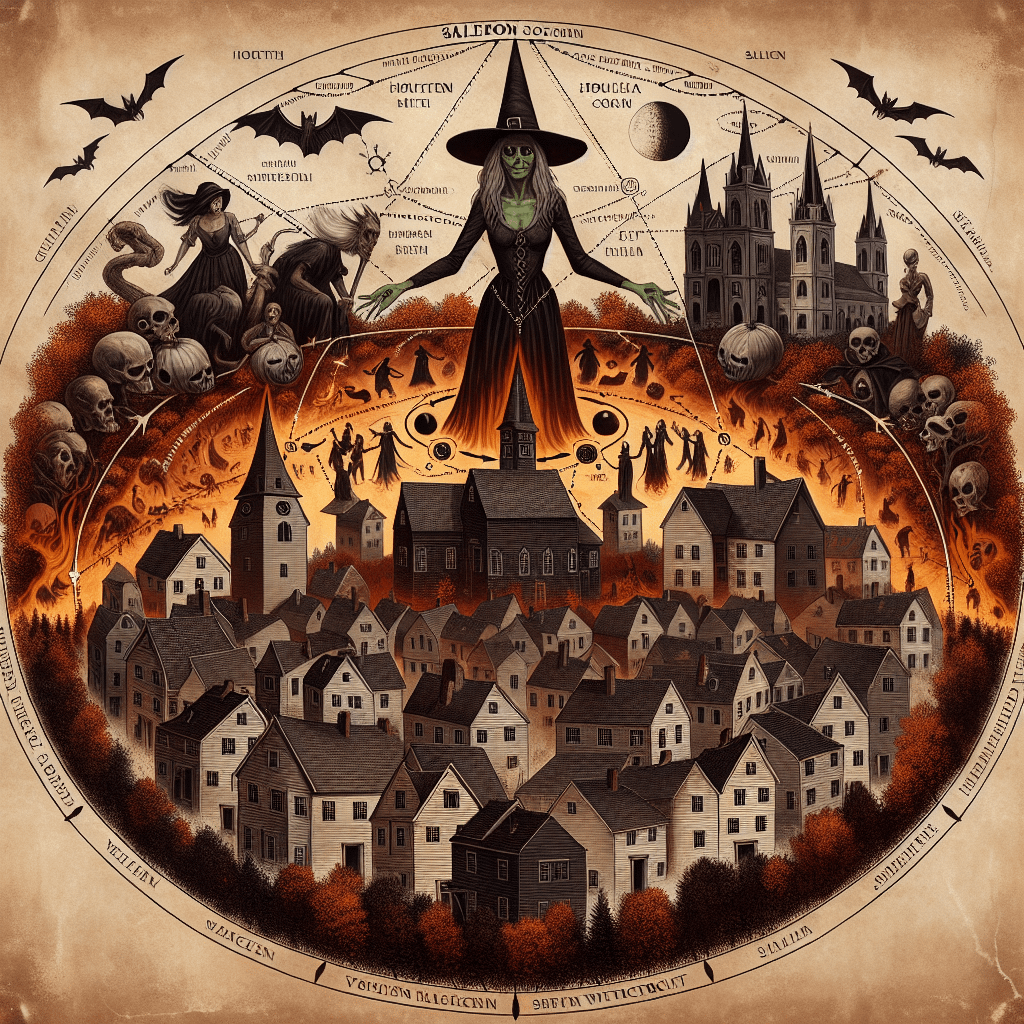As an Amazon Associate I earn from qualifying purchases.

In 1692, a series of hearings and prosecutions that would mark one of the darkest moments in colonial American history commenced—the Salem Witch Trials. In a span of little more than a year, over 200 individuals were accused of witchcraft, a crime punishable by death during that period. These events unfolded in and around Salem Village (now Danvers), Salem Town, Ipswich, and Andover, Massachusetts, tearing apart communities and leaving an indelible scar on the fabric of society.
The inception of the Salem Witch Trials can be traced back to January 1692 when a group of young girls in Salem Village, Massachusetts, began exhibiting strange and unexplainable behavior. The symptoms included fits, convulsions, and uncontrollable outbursts of gibberish. When the local doctor could not find a physical cause, he suggested witchcraft as a possible explanation. The spark of paranoia was lit, and it didn't take long for the flames to spread. The first to be accused of practicing witchcraft were three women of differing social standings: Sarah Good, Sarah Osborne, and an enslaved woman named Tituba. Good and Osborne maintained their innocence, whereas Tituba confessed under duress, affirming the fears of witchcraft within the community and triggering a series of accusations and trials.
The Salem Witch Trials were driven by a complex web of social, religious, and political factors. Massachusetts in the late 17th century was rife with tensions stemming from King Philip's War, strained relations with Indigenous peoples, and the recent smallpox epidemic. Furthermore, Salem Village itself was split into two factions: one in support of the local minister, Samuel Parris, who was the father of one of the afflicted girls, and those opposed to his stringent Puritan ways and taxation policies. This division stoked an environment ripe for hysteria, as accusations of witchcraft became a potent weapon in both personal vendettas and broader socio-political battles.
A compelling statistic associated with the Salem Witch Trials is that out of the more than 200 people accused, 30 were found guilty, and 19 were executed by hanging. Another, Giles Corey, was pressed to death for refusing to enter a plea, and at least five others died in jail awaiting trial. The trials continued to gain momentum until Governor William Phips, influenced by growing public unease and the criticism of the trials by prominent ministers, established a court that prohibited spectral evidence – testimonies about dreams and visions. This move significantly decreased the rate of convictions and led to the dissolution of the initial court, effectively bringing the period of witch hunt hysteria to a close.
While the Salem Witch Trials concluded in 1693, their impact endured through centuries. They serve as a vivid illustration of the dangers of isolationism, extremism, and the breakdown of community structures. Salem's legacy of witchcraft also became an early lesson in the importance of due process and the rule of law. Despite its historical distance, the episode prompts an ongoing dialog about the balance between fear and justice—one that continues to resonate in the collective consciousness and judicial practices even today.
“`html
How Did the Salem Witch Trials Create Division Within the Community?
“`
The Salem Witch Trials, a series of hearings and prosecutions in 1692, became notorious for the intense hysteria surrounding accusations of witchcraft in colonial Massachusetts. Witchcraft in Salem acted as a catalyst for division, splitting the towns into factions: those who believed the fervent allegations were necessary to purge evil and protect the townsfolk, and the skeptics who viewed the trials as paroxysms of mass paranoia and injustice. This chasm was rooted in a complex interplay of social, religious, and political dynamics, including fear of the unknown, personal vendettas, and the struggle for power and influence within the community. As tensions escalated, the fabric of the town was torn, resulting in ruined reputations, broken families, and a legacy of cautionary tales about the dangers of extremism and moral panic. In the subsequent sections, we delve deeper into the intricate web of factors that led to this dramatic split, exploring the underlying causes and enduring consequences of one of the most infamous chapters in American history.
The Salem Witch Trials, a series of hearings and prosecutions of people accused of witchcraft in colonial Massachusetts between February 1692 and May 1693, epitomize how deeply the fear of witchcraft could divide a community. The village of Salem and the surrounding area were engulfed in mass hysteria, leading to the arrest of over a hundred people, primarily women, based on flimsy evidence and the spectral testimony of their accusers.
The trials began after a group of young girls in Salem Village, now Danvers, Massachusetts, claimed to be possessed by the devil and accused several local women of witchcraft. A wave of hysteria spread throughout colonial Massachusetts, and a special court was convened to hear the cases. The first convicted witch, Bridget Bishop, was hanged in June 1692. As the trials progressed, the definition of witchcraft expanded, and more individuals were accused, often over petty community quarrels, long-standing feuds, or out of pure malice and fear.
The split between towns and within the Salem community itself largely arose from underlying socio-economic tensions. Salem Village, a small farming community, was at ideological odds with the larger, more prosperous town of Salem, which was involved largely in commerce and trade. Accusations of witchcraft often reflected the communal rift, with most of the accused coming from the Village and many of the accusers from the town.
Furthermore, the split was exacerbated by the involvement of the local clergy, which played a dire role in the trials. Ministers such as Samuel Parris, whose own daughter and niece were among the initial accusers, fueled the fire by preaching sermons about the presence of evil in the community. This undercurrent of religious extremism and the belief in the devil's power made it easier for the accusations to not only stick but also to grow in severity and quantity.
Ownership disputes, neighborhood disagreements, and the overall grim worldview of Puritan society contributed to the ease with which townspeople could believe that their neighbors were capable of consorting with evil spirits. Having a legal system that permitted testimony based on “spectral evidence,” or the claims by accusers that they had seen the accused persons' spirits or shapes inflicting harm, further divided the community as it provided no substantive proof that could be fairly rebutted.
The impact of these trials on the Salem community was profound. Families were torn apart as members testified against one anoth
Q1: What were the Salem Witch Trials?
A1: The Salem Witch Trials were a series of hearings and prosecutions in 1692 in colonial Massachusetts where people were accused of practicing witchcraft, leading to convictions and executions.
Q2: How did accusations of witchcraft begin to split the towns of Salem?
A2: Accusations began as a few isolated incidents but quickly escalated, creating widespread paranoia and fear. Neighbors turned against neighbors, and the community became divided between those who believed the accusations and those who were skeptical, leading to social and political rifts.
Q3: How many people were affected by the witch trials in Salem?
A3: More than 200 people were accused of practicing witchcraft, and 20 individuals were executed as a result of the trials.
Q4: What role did religion play in the Salem Witch Trials?
A4: Religion played a significant role, as Puritan beliefs included the existence of witches and the devil. Religious fervor and strict moral codes contributed to the readiness of the townspeople to believe in and combat witchcraft.
Q5: Were the Salem Witch Trials isolated to Salem Town and Salem Village only?
A5: While the trials began in Salem Village (now Danvers) and Salem Town (now Salem), the witch hunt and hysteria quickly spread to nearby towns and affected the entire Massachusetts Bay Colony.` p>
Q6: What types of evidence were used to convict accused witches?
A6: Evidence used in the trials included “spectral evidence” (testimony about dreams and visions), confessions obtained under duress or coercion, as well as various “tests” for witchcraft, many of which were superstitious or based on folklore.
Q7: How were the towns of Salem affected long-term by the witch trials?
A7: The aftermath of the trials left a lasting impact on the towns, with a lasting legacy of cautionary tales about the dangers of isolationism, extremism, and lapses in due process, and they are remembered as a dark period in colonial American history.
Q8: What eventually ended the Salem Witch Trials?
A8: Doubt and criticism over the validity of the trials grew, and the use of “spectral evidence” was increasingly questioned. Eventually, the Governor of Massachusetts, William Phips, dissolved the court that handled the trials and later pardoned the remaining accused.
Q9: Have there been any acknowledgments or apologies for the trials?
A9: Yes, various acts of remembrance and apologies have been made over the centuries, including the establishment of memorials, the annulment of convictions, and formal apologies from the state of Massachusetts to the victims and their families.
Q10: Can visitors learn about the Salem Witch Trials in Salem today?
A10: Yes, Salem has numerous memorials, museums, and educational programs dedicated to the history of the Salem Witch Trials, allowing visitors to learn about this significant event in American history.

Conclusion
The Salem Witch Trials were a dark chapter in American colonial history, profoundly impacting the social and religious makeup of Salem and neighboring towns. Witchcraft accusations rapidly escalated into a divisive force within these communities, creating an atmosphere of fear, suspicion, and hysteria that pitted neighbor against neighbor. The trials showcased how societal tensions could be exacerbated by fear of the unknown, ultimately leading to the fracturing of communities along lines of belief, social standing, and personal vendettas. The fervor of the trials, fueled by Puritanical zeal and the insatiable demand for confessions or accusations, widened the rifts within the towns. Some residents staunchly supported the hunt for witches as necessary to cleanse the community, while others condemned the trials as unjust, fomenting dissent and lasting animosities.
As the witchcraft crisis unfolded, it catalyzed profound questions about justice, due process, and the power of mass hysteria. In the aftermath, with the recognition that the trials were a tragic mistake, the affected towns grappled with reconciliation and the restoration of communal harmony. The painful legacy of the Salem Witch Trials served as a cautionary tale about the dangers of extremism and the fragility of social cohesion. The phenomena that split the towns over three centuries ago continue to provide insights into the human psyche, governance, and the social dynamics that can transform misunderstandings and fear into devastating conflicts.
Amazon and the Amazon logo are trademarks of Amazon.com, Inc, or its affiliates.


